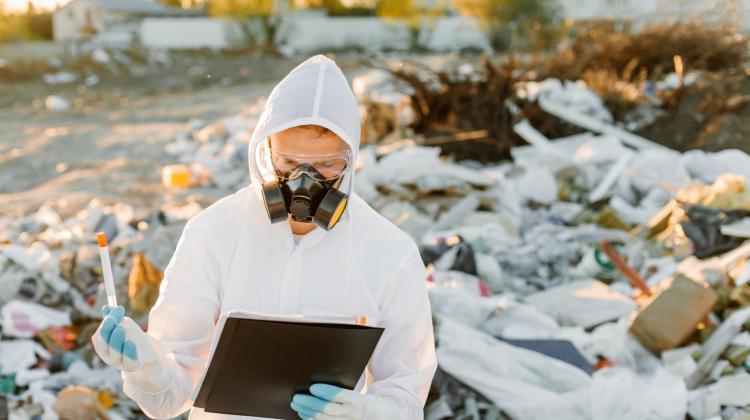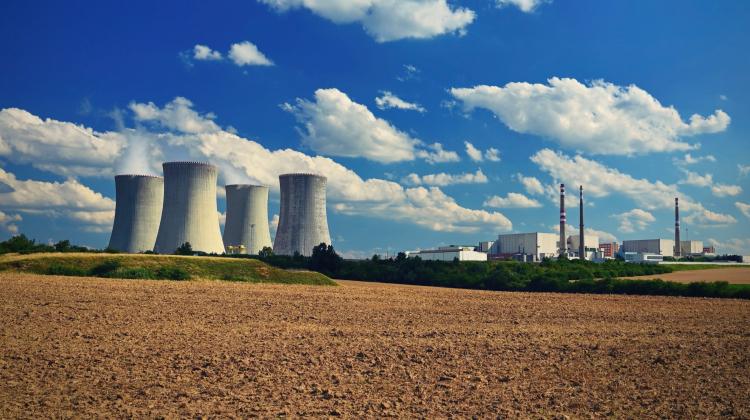-
a new recycling fee levied by the Ministry of Environmental Protection on January 1, 2018 pursuant to the amendment act of October 12, 2017 of the statutory act on the management of packaging and packaging waste,
-
the European Parliament's vote for the enforcement of a single-use plastics ban by 2021,
-
heated discussion in the press and on the Internet,
-
the COP24 Climate Change Conference in Katowice in December 2018.
Polymers are a great discovery of the 20th century, which has been acknowledged by the many global prizes and awards. Why have they taken the global economy by storm (construction, packaging, medicine, and others)? Because they make a very good material, provided that its waste is properly managed. Not a day seems to go by without a press article or a movie about polymers trashing our planet, e.g. 'Paradise beach drowning in trash' („Rajskie plaże toną w śmieciach”), 'drowning beneath a sea of plastics' („utopieniu w plastiku”), etc.
So, what is at the bottom of the problem of plastic pollution?
Only 7% of the total mass of waste are polymers (plastics), however, due to their low density, they make up almost 30% of the total volume of waste. Polymer material should be reused rather than disposed of in the environment. It should not even be disposed of in landfills as its decomposition is very hard. Nevertheless, I object to the claims that its decomposition takes a 100, 400 or, as we hear today, even a 1000 years! I would like to know who and how measured that time since polymers have not even been around for a 100 years. Kept in vacuum, they would certainly take a long time to decompose. Yet, we live in an environment where there is oxygen, UV radiation, elevated temperature, water, and microorganisms. All of these factors have a major influence on polymer chain degradation (e.g. with oxygen and UV radiation, polyethylene (PE) will decompose to CO2 and H2O in a matter of several weeks).
Products made of polymers should be recovered - reprocessed after their use, which means recycled. I know of three ways of recover polymer material recovery: recycling for materials (mechanical), chemical recycling (raw materials), recycling for energy (incineration). Recyclates are almost as useful and have a number of applications. However, pursuant to the European law, recyclates cannot be used in food packaging. Nevertheless, for a material to be recycled, polymer waste needs to be:
-
collected at source (in households, supermarkets),
-
sorted by labeling on products (polymers need to be segregated, they must not be mixed in recycling, therefore, products are labeled: 01 – PET, 02 – HDPE, 03 – PCV, 04 – LDPE, 05 – PP, 06 – PS, 07 – and others, which group includes polymers that should not be used in food packaging, possibly containing hazardous bisphenol A.
Furthermore:
-
there need to be proper recycling companies,
-
there needs to be law that would make it mandatory to use recyclates, and they should be purchased by companies manufacturing new materials,
-
there needs to be law that would impose stiff penalties on people and organizations polluting the natural environment.
Therefore, the biggest problem is not the use of plastics but rather waste mismanagement. If large companies use plastics, e.g. for packaging or disposable plates, bowls, cups etc., they need to be responsible for the plastic waste they produce.
Waste management
Companies that use polymer products (e.g. packaging) should pay the so called recycling fee. The funds should then be used to support the development of recycling industry (in the estimated amount of half a billion złoty). The thicker plastic bags that have recently been introduced into stores are supposed to be more environmentally friendly because they can be reused. However, they also require more polymer material (PE). Pursuant to the new regulation, polymer materials in excess of 50 g are not subject to the recycling fee (for packaging below 50 g, the fee is 20 gr), which means that almost the entire sale price makes the seller's profit (e.g. the supermarket's) because the cost of the product is a mere several grosze.
The situation looks similar as far as permits for importing into Poland waste for recycling by companies that do not yet have recycling equipment are concerned. The waste brought in from abroad is supposed to make up for shortages in the supply of materials. That means that our native companies dealing in waste segregation do not turn out sufficient product mass for recycling. This may explain new organization of waste segregation to be enacted in 2020. Poland has one of the lowest levels of recycling (about 15%), the subject of which should not only be plastics but also other materials such as metals, paper, etc. The European Union currently requires that the level of recycling be 30%, and increase in the coming years to reach 50% by 2020, and 70% by 2030.
Similarly to air pollution, the level of littering/improper disposal of refuse waste in Poland is one of the highest in Europe. Are canvass bags, textile bags etc. a feasible substitute for plastic packaging? These bags are old news. They date back as long as the 1960s. They are most useful for small purchases. For bigger items, I suggest you use polyethylene bags as they are strong and convenient. They should be collected after use and recycled.
Can polymer products be considered environmentally friendly?
-
Polymers are inert (unreactive). While it is true that they contribute to refuse waste, they are non-toxic. Water animals may choke if they are unfortunate enough to swallow a piece of refuse waste e.g. a piece of plastic foil.
-
Polymers are light-weight, septic, high strength, and can be used for wet product packaging. Such materials are tested and properly labeled.
-
PET bottles are lighter than glass bottles, which makes them environmentally advantageous as less fuel is used in transport.
-
Polymers are recyclable just like glass and paper.
-
Polymer products with addition of recyclates provide good value in use.
After a number of recycling cycles, material may lose some of its properties, in which case it should be recycled for energy in specialized waste incinerators. The calorific value of PE polyethylene is twice that of coal, and it can be used to sustain municipal waste incineration). Municipal waste incinerators need to have proper design, i.e. they need to have travelling grates, sufficient oxygen supply for combustion, and also proper fly ash filtering systems. In Poland, there are currently a few specialized incinerators. The energy generated from waste may play an important role in closed-loop economy (CE) coupled with appropriate climate policy.




